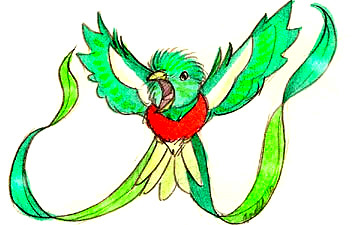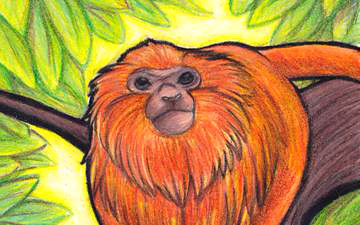For best results print the cards using the Firefox Browser
Cards
(QUICK LINKS: Decks | plants | mammals | birds | | reptiles | fish | cephalopoda | insects | microbe | events
( scientist | project | modifier | technique |)

Dendronotus frondosus
Dendronotus frondosus


Sorry, there is no photo available. If you have one, please submit
here
.
10 POINTS
• Dendronotus frondosus has a MOVE of 1.
Cool, Warm
Graphic by Ernst Haeckelen.wikipedia.org/wiki/Ernst_Haeckel
Dendronotus frondosus is a species of dendronotid nudibranch. It is a marine gastropod mollusc in the family Dendronotidae.[3] Dendronotus is a genus of sea slugs, nudibranchs, marine opisthobranch gastropod molluscs in the superfamily Tritonioidea. Dendronotus has an elongated, broad body, with 4 to 8 pairs of branched cerata on the notum. Animals in this genus have an obvious oral veil with 2 to 5 […] read more

Resplendant Quetzal
Pharomachrus mocinno


Sorry, there is no photo available. If you have one, please submit
here
.
3 POINTS
Play: Pharomachrus mocinno has a FLIGHT of 2.
Fact: The ancient Aztecs and Maya viewed the quetzal as the “god of the air” and as a symbol of goodness and light.
cool, warm
Graphic by Tricia Arnoldbabbletrish.blogspot.com/
The Resplendent Quetzal, Pharomachrus mocinno, is a spectacular bird of the trogon family. It is found from southern Mexico to western Panama (unlike the other quetzals of the genus Pharomachrus, which are found in South America and eastern Panama). There are two subspecies, P. m. mocinno and P. m. costaricensis, the Costa Rican Resplendent Quetzal. […] read more

Blackeyed Susan
Rudbeckia hirta


Sorry, there is no photo available. If you have one, please submit
here
.
4 POINTS
• Rudbeckia hirta has a SPREAD of 1 (Requires a POLLINATOR. This is the official state flower of Maryland.
Cool, Warm
Graphic by Coral Cargillbluecnidaria.deviantart.com
Rudbeckia hirta (common names: Black-eyed Susan, Blackiehead, Brown Betty, Brown Daisy, Brown-eyed Susan (Rudbeckia triloba), Gloriosa Daisy, Golden Jerusalem, Poorland Daisy, Yellow Daisy, Yellow Ox-eye Daisy) is a flowering plant in the family Asteraceae. It is an upright annual (sometimes biennial or perennial) native to most of North America, and is one of a number […] read more

Golden Lion Tamarin
Leontopithecus rosalia


Sorry, there is no photo available. If you have one, please submit
here
.
6 POINTS
Play: Leontopithecus rosalia has a MOVE of 2.
Fact:Local legends say that the Tamarin have psychic powers that help them hunt.
warm, hot
Graphic by Heather E. Harlowphylogame.org
The Golden Lion Tamarin (Leontopithecus rosalia, Portuguese: Mico-leão Dourado) also known as Golden Marmoset, is a small New World monkey of the family Callitrichidae. Native to the Atlantic coastal forests of Brazil, the Golden Lion Tamarin is an endangered species with an estimated wild population of “more than 1,000 individuals” and a captive population maintained at approximately 490 individuals.[3] Most of the wild population […] read more

European Garden Spider
Araneus diadematus


Sorry, there is no photo available. If you have one, please submit
here
.
10 POINTS
Play: Araneus diadematus has a MOVE of 2 and Araneus diadematus can feed on creatures of SCALE 5 or less.
cool, warm
Graphic by Ernst Haeckelcommons.wikimedia.org/wiki/Kunstformen_der_Natur
The European garden spider (Araneus diadematus), diadem spider, or cross spider, is a very common and well-known orb-weaver spider in Western Europe. Araneus diadematus also lives in parts of North America, in a range extending from New England and theSoutheast to California and the Northwestern United States and adjacent parts of Canada.[citation needed] Individual spiders’ colouring can range from extremely light yellow to […] read more

Overpopulation
Event card
Sorry, there is no photo available. If you have one, please submit
here
.
Play: Place on any SPECIES card of FOOCHAIN 2 or higher.
Effect: Any SPECIES card(s) that is the adjacent “diet” of the played card is immediately discarded.
Graphic by Catherine Fielderl-h4x3d.deviantart.com/
Overpopulation is a condition where an organism‘s numbers exceed the carrying capacity of its habitat. In common parlance, the term often refers to the relationship between the human population and its environment, theEarth.[1] Overpopulation does not depend only on the size or density of the population, but on the ratio of population to available sustainable […] read more